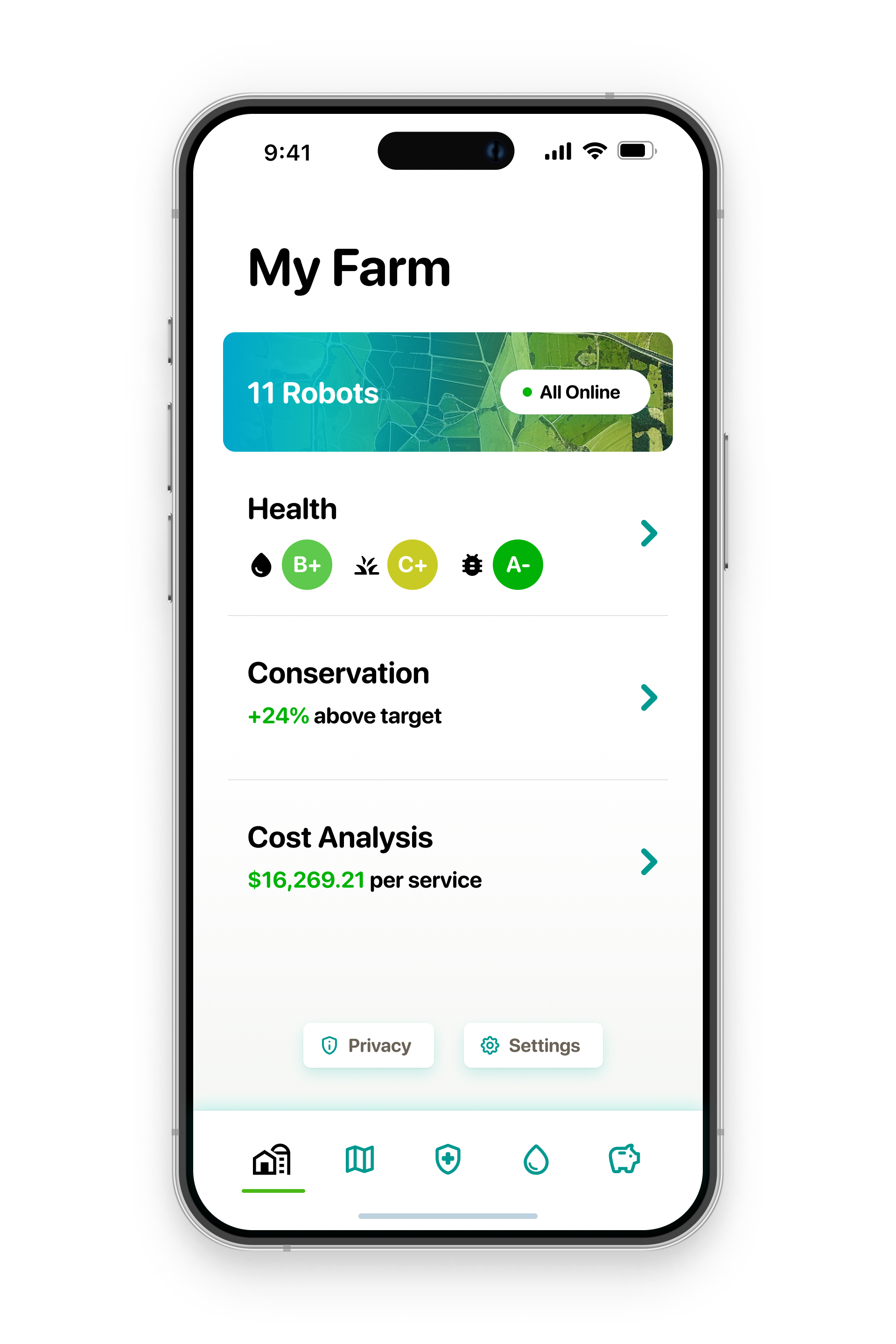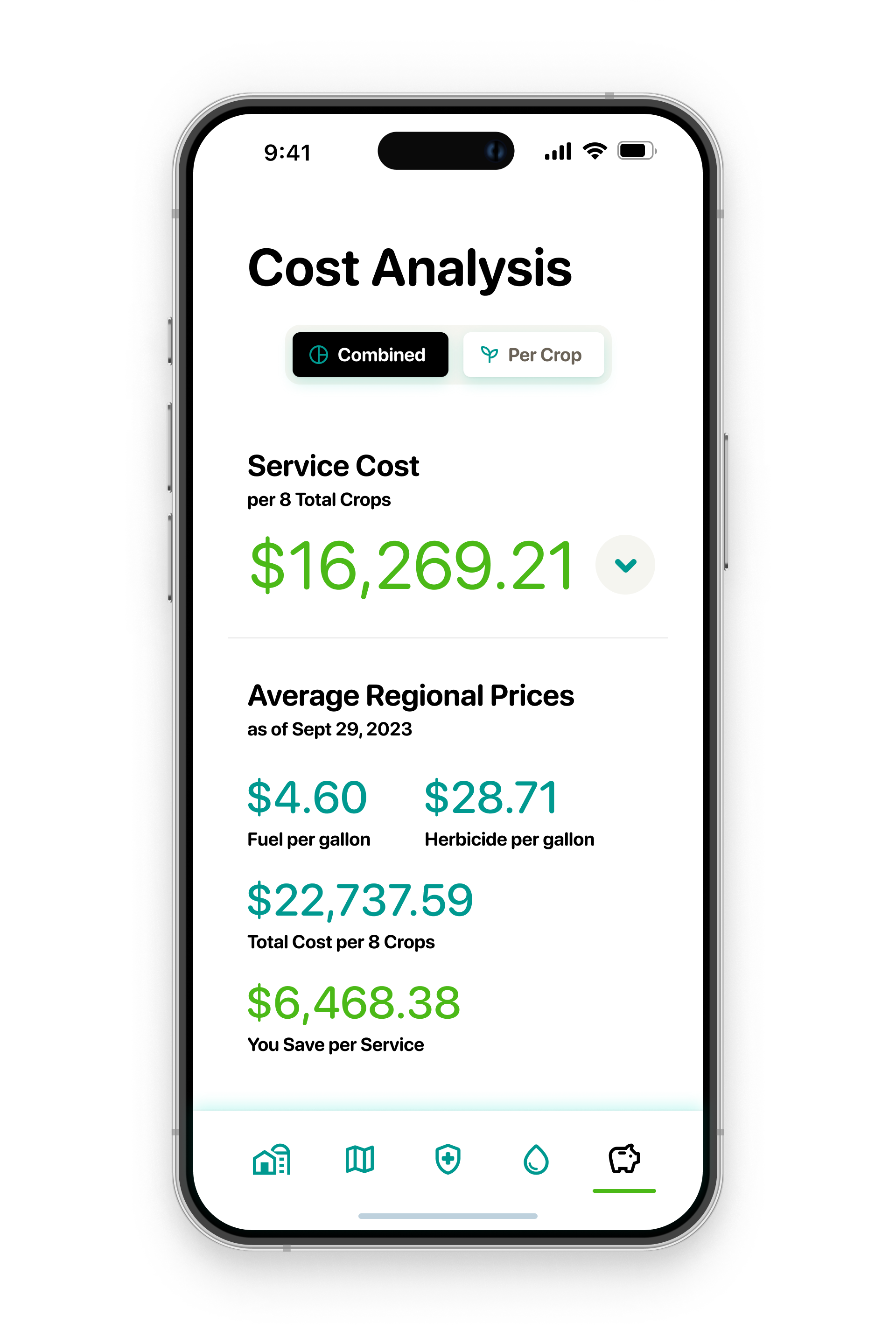Deliver solutions that address customers’ mental models.
Ag-Tech Exploration
A mobile app provides farmers who are resistant to robotics with real-time, visually represented details about robot activity, crop health, herbicide savings, carbon reduction, and reduced soil compaction. To address service cost and reliability concerns, details about cost comparisons and maintenance are transparently included in the app.
CLIENT’S VALUE PROPOSITION
Solar-powered autonomous robots, equipped with cutting-edge technology, offer a unique solution to address weed infestations while reducing/eliminating costs for farmers and carbon emissions.
CHALLENGE
Despite increasing concerns about herbicide-resistant weeds, farmers are resistant to adopting robotic solutions. Barriers to adoption include concerns about cost, complexity, and distrust in the reliability of new technology.
SOLUTION
Directly address farmers’ concerns in the product design by providing information on cost savings, ease of use, robot reliability and data privacy.






APPROACH: THE HOW
Crafting a path to adoption by designing for impact.
1. Discover context and impacted groups.
An impactful design approach looks at users and their contexts holistically, not only focusing on those who are interacting with a device, but also those who are affected by its existence.
2. Define area of focus and desired impact outcomes.
The robot company defines its target impacts in objective environmental terms like the number and size of farms where its robots are deployed, the amount of herbicide use prevented, etc. These metrics provide some clear objectives for embedding impact directly into the UX.
With an impactful design approach, we ask questions about additional ways to think about and measure impact, like:
What are the specific barriers to adoption that historically marginalized farmers might face?
What are the long-term economic implications for farmers’ families of reduced soil compaction and increased productivity? How might we measure these?
What cultural differences exist among farmers that influence decision making? How can we craft culturally resonant incentives?
What effects, if any, might the robots have on farmers’ stress levels and quality of life? What could go wrong?
3. Develop potential solutions and assess impact. Prototype, test, iterate, repeat.
A holistic UX strategy incorporates robot interfaces, control systems, and a mobile app to optimize ease and efficiency across the entire usage path. A design system provides the structure for design enhancement over time. To address farmers' concerns directly, designers focus first on a mobile app for farmers providing information on cost savings, ease of use, robot reliability and data privacy.
Research with farm communities highlights the value of straightforward messaging on costs. Visual and functional prototypes shared with farmers and other stakeholders determine how well the proposed designs address adoption concerns and lead to the desired impacts.
App prototypes include features like language translation for non-English speakers, gamification of conservation measures taken, access to information on subsidies for robot services available to historically marginalized farmers, and local community health meters. Co-design and testing sessions help determine which features are likely to have the greatest positive effect on adoption rates.
Return on investment:
ROI is demonstrated over time as widespread adoption of the technology occurs. Farmers who embrace robot service and the mobile app report substantial cost savings due to reduced herbicide usage, improved crop health, and decreased reliance on heavy equipment, which drives continued use of the robotics service.
Both farmers and the robot company benefit from improved reputations and public relations. Reduced carbon emissions and minimized soil compaction further enhance the technology's credentials and motivate farmers to recommend the robotics service to other farmers in their networks. The robotics company expands its customer base and its positive impact.






